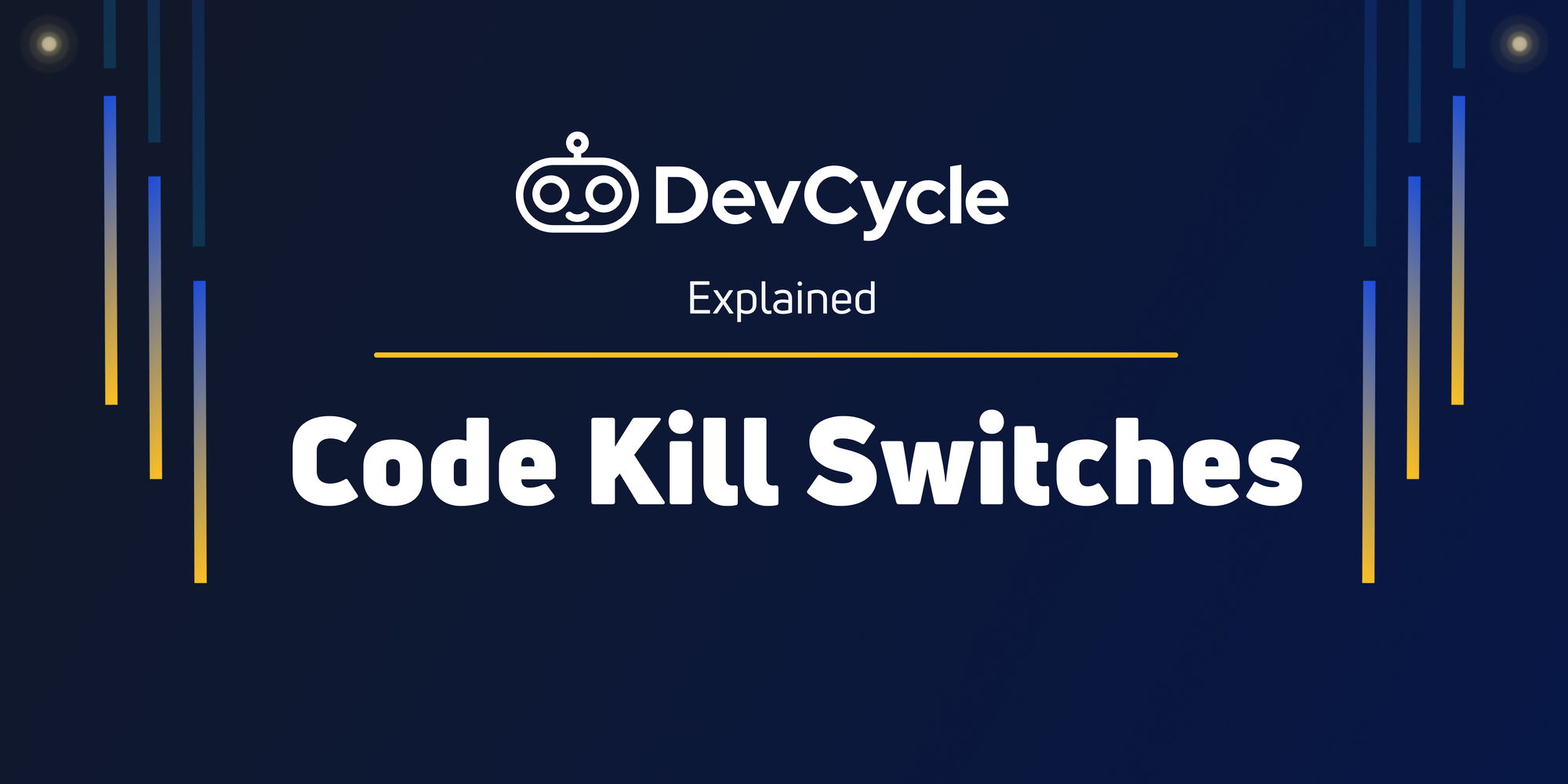Code Kill Switches Explained
Kill switches allow you to separate deployment from release. By wrapping a feature in a feature flag, if it causes problems you can simply turn off the feature, and test it again before re-releasing it to users.

What is a code kill switch?
Kill switches allow you to separate deployment from release. By wrapping a feature in a feature flag, if it causes problems you can simply turn off the feature, and test it again before re-releasing it to users.
By simply changing the status of your feature flag, you don’t need to restart your application which saves you time and minimizes negative impact. In addition, anyone on your team can use the kill switch to turn off a feature if anything goes wrong. This allows non-technical members of your team such as product and marketing to disable a feature without relying on engineers.
Detect Code Bugs Early & Eliminate Software Feature Rollbacks
Historically, there's been one challenge that's been the toughest for companies to overcome: integration. It's when several teams work separately for months, each one building their own features. While they were working in complete isolation, their parts of the application were evolving in different directions.
It’s called “integration hell” when separate, incompatible versions of the same application are fighting with one another. It’s the struggle of merging apps that have been left unchanged from one another for too long. Continuously integrating code makes this process less painful. With CI, your developers integrate their work with a public repository or website at least once a day.
Automated tests are crucial for projects. They reduce the risk of mistakes and make it easier to detect bugs early on. When someone on your team does an integration, have the server create a build and make sure automated tests are run on that build. This way, if there are any problems, they’re quickly caught and the person who pushed the code knows what needs to happen to fix it.
Why should I use Kill Switches to disable code?
You can use a kill switch to quickly and easily disable code. With kill switches you can hide an unfinished feature from users. By doing this, developers can merge on their code more frequently and avoid long-running feature branches.
Another use case for kill switches is A/B testing. A/B testing is a user experience research technique that consists of randomly splitting users into two groups, A and B. Each user sees one of the selected versions of the site. It is up to the experimenter to decide which version they want to keep based on which version performed best. A/B testing can be enabled with feature flags, providing a quick and convenient way to switch between the two or more versions of your application based on user preferences.
Kill switches can also be used for canary releases. Canary releases allow you to deploy a feature to a small subset of users, monitoring that group to detect issues. If you find any problems, you can then stop the rollout. That way, if there are any bad outcomes, you’ve only affected a small percentage of your user base.
